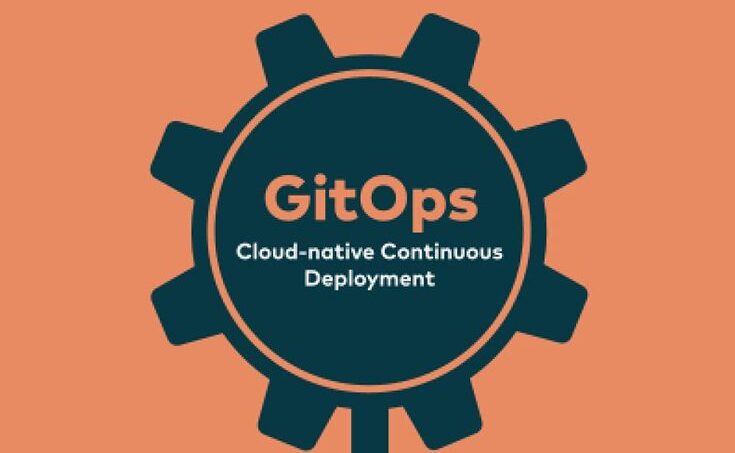GitOps has revolutionized deployment strategies by utilizing Git as the single source of truth for declarative infrastructure and applications. While this approach streamlines DevOps workflows, it also introduces unique security challenges that must be addressed. This article explores comprehensive security practices for GitOps implementations.
Understanding the GitOps Security Landscape
GitOps centralizes infrastructure management through code repositories, creating both security benefits and potential vulnerabilities. The core principle—that Git becomes your system of record—means security must be implemented at multiple levels:
- Repository security: Protecting the integrity of your source code
- CI/CD pipeline security: Securing the automated deployment processes
- Infrastructure security: Ensuring the resulting deployed systems remain secure
- Access control: Managing who can make changes to your infrastructure
Essential GitOps Security Best Practices
1. Secure Git Repository Management
Your repositories contain the blueprint for your entire infrastructure, making them prime targets:
- Implement branch protection rules to prevent direct commits to production branches
- Require signed commits to verify author identity and prevent spoofing
- Utilize protected tags for release versioning to prevent tampering
- Enable two-factor authentication for all repository users
- Regular audit of repository access to maintain principle of least privilege
- Consider private repositories for sensitive infrastructure definitions
2. Robust CI/CD Pipeline Security
The automation pipeline that implements your GitOps workflow must be secured:
- Isolate CI/CD environments from production systems
- Implement strict secrets management using tools like HashiCorp Vault or cloud-native secrets managers
- Scan infrastructure code with tools like Checkov, Terrascan, or Trivy
- Validate all changes through automated testing before deployment
- Use dedicated service accounts with minimal permissions for deployment operations
- Implement pipeline attestation to verify the integrity of your CI/CD process
3. Infrastructure as Code Security
The declarative configurations driving your infrastructure must be secured:
- Version pin all dependencies to prevent supply chain attacks
- Implement drift detection to identify unauthorized changes
- Use immutable infrastructure patterns where possible
- Implement infrastructure validation hooks to prevent misconfiguration
- Scan Kubernetes manifests for security issues before deployment
- Configure resource quotas and limits to prevent resource exhaustion attacks
4. Access Control and Authentication
Controlling who can make changes is fundamental to GitOps security:
- Implement RBAC (Role-Based Access Control) throughout your GitOps toolchain
- Separate duties between repository management and deployment execution
- Audit all access changes to quickly identify suspicious activity
- Integrate with centralized identity providers for consistent access management
- Implement just-in-time access for administrative operations
- Regular access reviews to remove stale permissions
5. Secrets Management
Securing sensitive information within a GitOps workflow requires special attention:
- Never store raw secrets in Git repositories
- Use dedicated secrets management solutions integrated with your GitOps tools
- Implement secret rotation policies and automated rotation where possible
- Consider sealed secrets for Kubernetes environments
- Audit secret access and usage regularly
- Implement encryption-at-rest for all stored secrets
Implementing GitOps Security: A Practical Approach
Phase 1: Security Foundation
Start with these fundamental security controls:
- Repository hardening:
# Example GitHub branch protection configuration branches: - name: main protection: required_pull_request_reviews: required_approving_review_count: 2 required_status_checks: strict: true enforce_admins: true required_signatures: true - Basic pipeline security:
- Implement secrets scanning
- Deploy infrastructure scanning tools
- Create separate deployment environments
Phase 2: Enhanced Security Controls
Build on your foundation with:
- Advanced access controls:
- Implement fine-grained permissions
- Add multi-factor authentication
- Create dedicated service accounts
- Comprehensive testing:
- Add security testing to CI/CD
- Implement policy validation
- Configure drift detection
Phase 3: Security Maturity
Achieve GitOps security maturity with:
- Continuous verification:
- Deploy runtime security monitoring
- Implement automated response systems
- Create security metrics dashboards
- Supply chain security:
- Implement Software Bill of Materials (SBOM)
- Add signed releases and attestations
- Create vulnerability management processes
Common GitOps Security Pitfalls
Avoid these frequent security mistakes in GitOps implementations:
- Neglecting repository security while focusing only on deployment security
- Storing secrets directly in repositories, even if encrypted
- Using overly permissive service accounts for automation
- Failing to implement change approval processes
- Neglecting image scanning and container security
- Inadequate monitoring of GitOps tooling itself
Security Tools for GitOps
Several tools can enhance your GitOps security posture:
- Flux and ArgoCD: GitOps controllers with built-in security features
- OPA/Gatekeeper: Policy enforcement for Kubernetes
- Kyverno: Kubernetes-native policy management
- Sealed Secrets: Encryption for Kubernetes secrets
- SOPS: Secret management using encrypted files
- Terrascan: Security vulnerability scanner for IaC
- Trivy: Comprehensive vulnerability scanner
Conclusion
Security in GitOps requires a holistic approach that spans from repository management to infrastructure deployment and monitoring. By implementing the practices outlined in this article, organizations can maintain the agility advantages of GitOps while ensuring robust security controls protect their infrastructure and applications.
Remember that GitOps security is not a one-time implementation but an ongoing process that must evolve with your infrastructure and the threat landscape. Regular reviews, updates to security tooling, and continuous testing are essential components of a mature GitOps security strategy.

